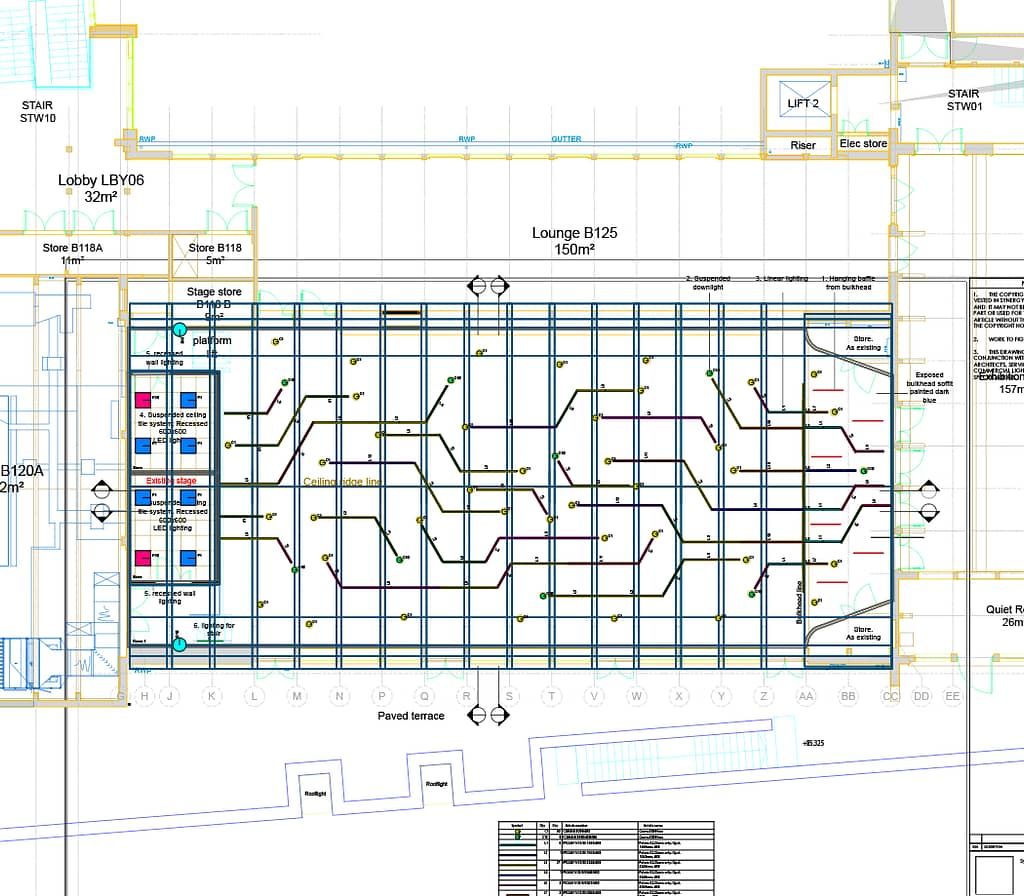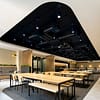Blog
A Guide to Lighting Design
This comprehensive guide is brought to you by our in-house lighting design expert, Ian Forrow. With a wealth of knowledge and experience, Ian provides valuable insights into how lighting can transform spaces, evoke emotions, and enhance experiences. For more information and resources, visit Ian’s website here.
The Basics of Lighting Design
Lighting design is a multidisciplinary field that harmonises art, science, and technology. It involves mastering a range of fundamental principles:
Ambient, Task, and Accent Lighting: Understanding these three layers of lighting is crucial. Ambient lighting provides overall illumination, task lighting focuses on specific areas for activities, and accent lighting adds drama by highlighting particular features.
Light Quality, Colour Temperature, and Brightness: These factors determine the comfort and functionality of a space. Colour temperature affects the ambience, ranging from warm (yellowish) to cool (bluish) tones, while brightness levels need to be balanced for different tasks and settings.
Lighting Fixtures and Their Functions: From chandeliers and pendants to recessed lights and sconces, each fixture serves a unique purpose and contributes to the overall design.
Lighting Controls and Automation: Modern systems allow for precise control over lighting conditions, offering flexibility and energy efficiency through dimmers, sensors, and smart home integrations.
Understanding these basics is essential for crafting lighting schemes that fulfil both aesthetic aspirations and practical requirements.

Creating Mood and Atmosphere
Lighting has an extraordinary ability to shape the mood and atmosphere of any space:
Techniques for Using Light to Create Drama, Intimacy, or Excitement: By manipulating light and shadow, designers can craft environments that provoke specific emotional responses. For instance, soft, diffuse lighting can create a cosy and intimate setting, while dynamic, vibrant lighting can infuse a space with energy.
The Psychology of Lighting and Its Impact on Human Perception: Light affects how we feel and perceive our surroundings. Understanding the psychological effects of different lighting scenarios helps in designing spaces that promote well-being and enhance user experience.
Lighting Design Considerations for Different Environments: Different settings require different approaches. Residential lighting aims for comfort and style, commercial lighting focuses on functionality and brand identity, while outdoor lighting enhances safety and landscape aesthetics.
Mastering mood lighting enables designers to create spaces that resonate emotionally with their inhabitants.
Architectural Integration and Illumination
Effective lighting design involves seamless integration with architectural elements:
Strategies for Highlighting Architectural Features and Enhancing Aesthetics: Lighting can accentuate architectural details, textures, and forms, adding depth and interest to spaces.
The Role of Natural Light and Daylighting in Design: Incorporating natural light not only reduces energy consumption but also enriches the human experience by connecting indoor spaces with the outside world.
Techniques for Mitigating Glare and Controlling Light Pollution: Proper lighting design minimises glare, which can cause discomfort, and reduces light pollution, preserving nightscapes and contributing to environmental sustainability. Read our guide on UGR 19 lighting here.
Sustainable Lighting Practices and Energy-Efficient Solutions: Employing energy-efficient fixtures and sustainable design principles helps in creating eco-friendly lighting schemes that reduce environmental impact.
Integrating light thoughtfully within architectural contexts results in environments that are both visually stunning and highly functional.
Innovations and Trends in Lighting Design
The lighting design landscape is continually evolving, driven by technological advancements and shifting aesthetic trends:
LED Lighting and Its Transformative Impact on Design: LEDs offer versatility, energy efficiency, and longevity, revolutionising lighting design possibilities.
Smart Lighting Systems and IoT Integration: Smart lighting allows for remote control, automation, and customisation, enhancing convenience and energy management.
Dynamic Lighting Effects and Interactive Installations: Interactive and dynamic lighting installations create engaging experiences, blending art with functionality.
Sustainable Materials and Eco-Friendly Design Practices: The use of sustainable materials and eco-conscious design approaches is becoming increasingly important in creating environmentally responsible lighting solutions.
Keeping abreast of these innovations enables designers to push creative boundaries and stay ahead in a dynamic industry.
Lighting design is an art form that illuminates our world in profound ways. It shapes our visual experiences, influences our emotions, and enhances our well-being. By grasping the principles, mastering the techniques, and embracing cutting-edge innovations, designers can transform ordinary environments into extraordinary spaces. Join us at Illuminating Spaces as we continue to explore and celebrate the captivating world of lighting design.



